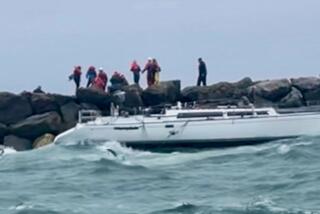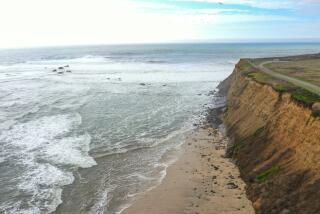Offshore yacht races in Bay Area suspended after deadly accident
TheU.S. Coast Guardhas temporarily suspended offshore yacht racing in the San Francisco Bay Area after an accident earlier this month killed five of eight crew members near the rugged Farallon Islands.
At least two races, one scheduled for Saturday, will be rerouted while US Sailing — the sport’s national governing body — conducts an independent review of Bay Area offshore racing procedures. Coast Guard officials said they also were “calling on all offshore race organizers and participants to conduct their own safety stand-downs during this period.”
“The San Francisco Bay Area sailing community is one of the most vibrant, experienced, and capable … in the world,” Coast Guard Capt. Cynthia Stowe said in a statement Thursday. “This temporary safety stand-down from offshore racing will allow the Coast Guard and the offshore racing community to further our common safety goals.”
The precautions come after the 38-foot yacht Low Speed Chase was slammed by two huge waves as it neared the Farallones 27 miles from San Francisco Bay. The body of one crew member was recovered, and four others remain missing and are presumed dead.
Laura Munoz, executive director of the Yacht Racing Assn. of San Francisco Bay, said that regardless of US Sailing’s findings, her organization was considering imposing a restricted zone to keep vessels about a quarter-mile from the rocky islands during future contests.
The review comes days after Bryan Chong, among the three Low Speed Chase survivors, detailed the April 14 accident in a letter to the website Sailing Anarchy and two Marin County newspapers in hopes that his reflections would “spark a wider dialogue within the sailing community about safety standards and, more importantly, safety practices.”
According to his account, the race began with a botched start that left Low Speed Chase at the back of the pack, and the crew’s focus shifted from winning to merely finishing. “Our mind set is definitely not aggressive,” he wrote, recalling good-natured banter among the crew as they approached the islands.
They sought to keep 10 boat lengths from the zone where waves typically would break as they began to round the islands, Chong recalled. But the topography of the reef can cause waves to break farther out.
Alan Cahill was at the wheel. Chong was trimming the main sail and the others were at the rail when a massive, cresting wave approached. “I’ve seen large waves before but this is unlike anything I’ve ever seen outside of big-wave surf videos,” Chong wrote.
“We’re heading into a crashing wall of water with 9-10 knots of boat-speed and it breaks directly on us,” he wrote. “The last thing I see is the boat tipping toward vertical with a band of water still above it.”
When the vessel righted, only Chong and crewman Nick Vos remained on board. Six crew members, including boat owner James “Jay” Bradford, were washed overboard. “The sails were shredded, the mast snapped and every flotation device had been ripped off,” Chong wrote. As he and Vos began to try pulling crew members back on board, another wave hit, sweeping Chong into the boulder-strewn water. Vos, who broke his leg, managed to stay aboard as the vessel was pushed onto the rocks. Bradford also survived.
Tethers are required on board yachts during offshore races, and sailors generally are required to use them at night. But during the day, such safety devices largely are optional.
“It’s obvious to me now that I should have been clipped into the boat at every possible opportunity,” Chong wrote, before offering a fond farewell to his former mates: “Alan, Marc, Jordan, Alexis and Elmer. Keep your rig tuned, your kite full and your foulies dry,” he wrote. “We’ll one day finish our race together.”
More to Read
Start your day right
Sign up for Essential California for news, features and recommendations from the L.A. Times and beyond in your inbox six days a week.
You may occasionally receive promotional content from the Los Angeles Times.







